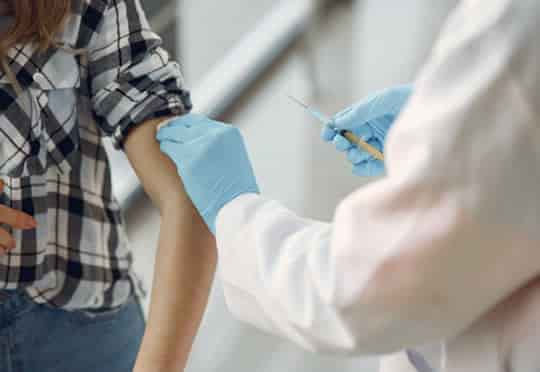The possible side-effects of Moderna’s COVID-19 vaccine in some people.
Moderna’s vaccine is effective in preventing severe COVID-19 and has been highly praised since the clinical trials have shown a 94.1 percent protection rate.
However, the public needs to be aware of the possible adverse effects, even if there are no serious safety concerns.
The Moderna vaccine phase 3 clinical trial results show that, in general, reactions to the vaccine like pain, redness, and swelling at the site of injection were mild.
Nevertheless, 50 percent of recipients after the second dose experienced moderate-to-severe side-effects such as headache, muscle aches, joint pain, and fatigue.
The side-effects were temporary, occurring 15 hours after the injection and disappearing in most cases by day 2 with no consequences.
Expected adverse reactions after vaccination
Dr Luke Hutchison a computational biologist, who participated in Moderna’s coronavirus vaccine trial talks about his experience in an article published in the journal Science.
He said his arm swelled up to the size of a goose egg after the second dose and within a few hours he had a 38.9°C fever and muscle aches:
“I started shaking.
I had cold and hot rushes.
I was sitting by the phone all night long thinking: ‘Should I call 911?’”
The symptoms were resolved after 12 hours, but as he points out nobody had prepared him for the severity of the reaction.
He added that people should be told about the possible adverse reactions as some people, soon after vaccination, might experience these symptoms.
According to Professor Florian Krammer, a vaccinologist who participated in Pfizer’s trial, those short-term side effects (reactogenicity) should not stop people from getting vaccinated because the coronavirus kills 1 in every 200 people that it infects.
He said:
“Sore arms, fevers, and fatigue are “unpleasant but not dangerous.”
Data analysis of Moderna’s vaccine trial by an independent board suggests several severe side-effects as follows:
- fatigue in 9.7 percent,
- muscle pain in 8.9 percent,
- joint pain in 5.2 percent,
- headache in 4.5 percent,
- and fevers of 39°C to 40°C in 2 percent of participants.
Most people will have no or mild side-effects after receiving a Pfizer or Moderna vaccine, but if only 2 percent of 500 million people across the world who get either the Pfizer or Moderna vaccine develop severe fevers, that would be 10 million people.
Professor Arnold Monto, an epidemiologist at the University of Michigan School of Public Health, said:
“This is higher reactogenicity than is ordinarily seen with most flu vaccines, even the high-dose ones.”
Side-effects are sign of normal response
Many experts believe that the side-effects are normal signs, showing an effective immune response to the vaccine.
Professor Drew Weissman, an immunologist at the University of Pennsylvania whose work was important for the COVID-19 vaccines, said:
“Both Moderna’s and Pfizer/BioNTech’s vaccines require two doses separated by several weeks.
Reactogenicity is typically higher after a second dose.
The side effects “mean the vaccine is working well. …
[It] means you had such a good immune response to the first dose and now you are seeing the effects of that.We suspect the lipid nanoparticle causes the reactogenicity, because lipid nanoparticles without mRNA in them do the same thing in animals.
We see production, in the muscle, of inflammatory mediators that cause pain, [redness], swelling, fever, flulike symptoms, etc.”
→ Read on: The Common Side-Effects Of The Pfizer Vaccine
The study was published in The New England Journal of Medicine (Baden et al., 2021); The article published in Science (Wadman, 2020).

